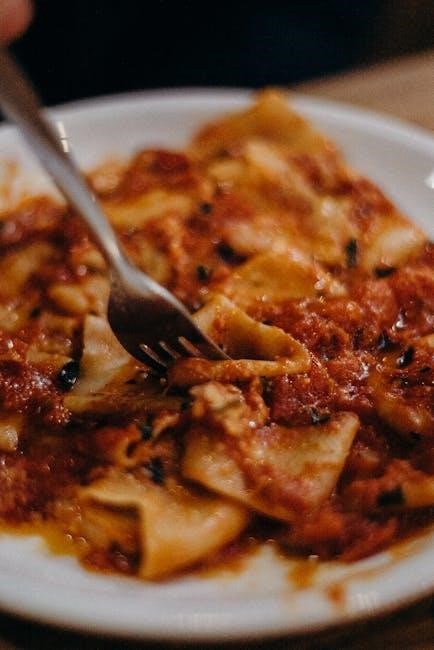
The Last Supper Worksheet PDF is an educational resource designed to help students explore the biblical story of Jesus’ final meal with His disciples․ It provides interactive activities, such as fill-in-the-blank exercises, word searches, and art projects, to deepen understanding of this significant event․ The worksheet is ideal for religious or history education, offering a structured approach to learning about the Last Supper’s symbolism, key events, and cultural depictions․ It is suitable for various age groups and learning styles, making it a valuable tool for teachers and students alike․ The resource encourages engagement and reflection on the profound teachings of Jesus during this pivotal moment in history․
Overview of the Topic
The Last Supper Worksheet PDF is a comprehensive educational tool designed to explore the biblical story of Jesus’ final meal with His disciples․ It provides a structured approach to understanding the significance of the Last Supper, its cultural depictions, and its relevance in religious education․ The worksheet includes interactive activities such as fill-in-the-blank exercises, word searches, and puzzles to engage students․ It also incorporates art projects and reflection exercises to deepen understanding․ Suitable for various age groups and learning styles, the resource is ideal for educators seeking to teach the biblical and historical context of the Last Supper․ The PDF format makes it easily accessible and printable for classroom or home use․
Importance of the Last Supper in Religious Education
The Last Supper holds profound significance in religious education as it represents the institution of the Eucharist and the New Covenant․ It teaches students about Jesus’ sacrifice, forgiveness, and the importance of remembering His actions through communion․ The event emphasizes unity, love, and betrayal, offering moral and spiritual lessons․ The worksheet helps students connect with these teachings by exploring the biblical account, its cultural depictions, and its relevance in Christian worship․ By engaging with the Last Supper’s story, learners gain a deeper understanding of its spiritual and historical impact, fostering faith and reflection in their own lives;
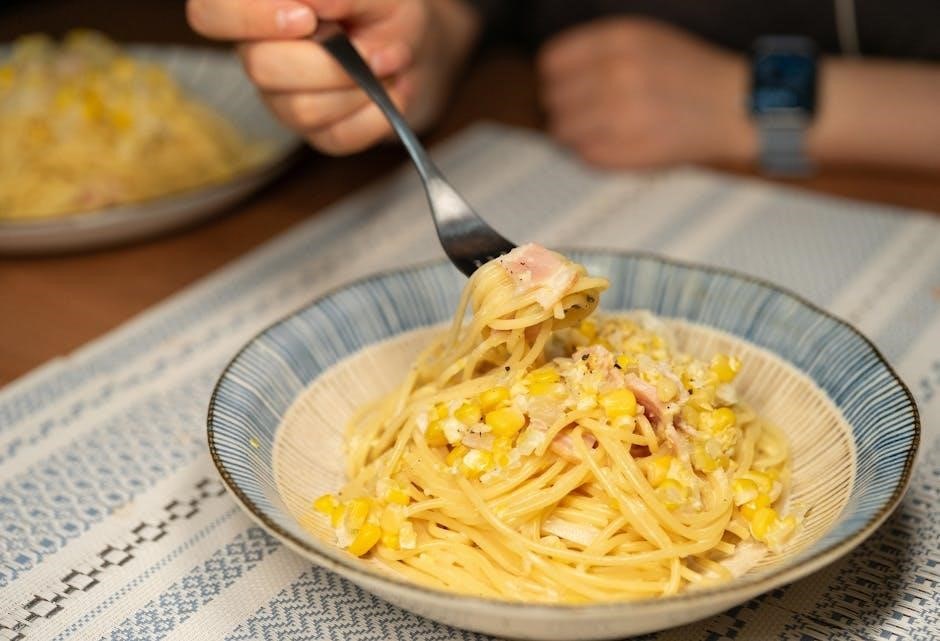
Biblical Significance of the Last Supper
The Last Supper is a pivotal moment in Christian scripture, marking Jesus’ final meal with His disciples before His crucifixion․ It signifies the institution of the Eucharist․

Key Events of the Last Supper
The Last Supper, as recorded in the New Testament, includes several pivotal moments․ Jesus predicted His betrayal, identifying Judas as the one who would carry it out․ He instituted the Eucharist, breaking bread and sharing wine to symbolize His body and blood․ Peter, despite his loyalty, was forewarned of his denial of Jesus․ These events emphasize themes of sacrifice, betrayal, and the establishment of a sacred ritual for His followers․ The supper also highlighted Jesus’ final teachings and prayers, showcasing His deep connection with the disciples before His arrest․
- Judas is identified as the betrayer․
- Institution of the Eucharist with bread and wine․
- Jesus predicts Peter’s denial․
- Final teachings and prayers shared with the disciples․
Symbolism of Bread and Wine
In the Last Supper, bread and wine hold profound spiritual significance․ Jesus used bread to symbolize His body, which would be broken for the sins of humanity, and wine to represent His blood, which would be shed for redemption․ This act instituted the Eucharist, a sacred ritual in Christian faith․ The bread signifies sacrifice, unity, and nourishment, while the wine embodies life, covenant, and forgiveness․ These symbols are central to religious education, helping students grasp the deeper meaning of Christ’s sacrifice․ Worksheets often include activities to explore these symbols, fostering a stronger connection to the teachings of the Last Supper․
- Bread: Represents Christ’s body, broken for humanity․
- Wine: Symbolizes Christ’s blood, shed for redemption;
Cultural and Artistic Depictions of the Last Supper
The Last Supper has inspired countless artistic interpretations, from paintings to sculptures, films, and literature, each capturing its profound cultural and religious significance․
- Famous artworks like Leonardo da Vinci’s painting have shaped its iconic imagery․
- Modern artists reinterpret the scene in diverse styles and mediums․
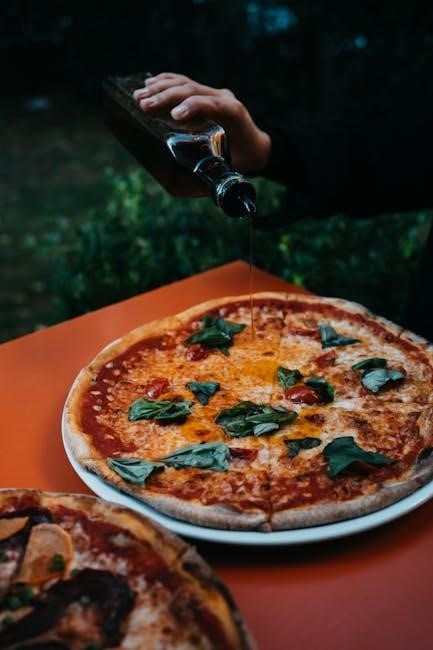
Leonardo da Vinci’s Painting
Leonardo da Vinci’s masterpiece, The Last Supper, is one of the most iconic representations of the event․ Painted in the late 15th century, it captures the emotional and dramatic moment when Jesus announced his betrayal․ Using oil and tempera on a dry wall, da Vinci created a lifelike scene with dynamic expressions and body language․ The painting’s perspective and composition emphasize unity and tension among the apostles․ Its deterioration over time has led to extensive restorations, but it remains a cornerstone of religious and artistic history, offering profound insights into the story’s emotional depth and cultural significance․
- Depicts the apostles’ reactions with remarkable detail․
- Focuses on the psychological and emotional dynamics of the moment․
- Remains a pivotal work in art and religious education․
Other Artistic Interpretations
Beyond da Vinci’s iconic depiction, the Last Supper has inspired countless artistic interpretations across cultures and mediums․ Artists like Salvador Dalí, Pablo Picasso, and Marc Chagall have reimagined the scene, each infusing their unique style and perspective․ These works often reinterpret the emotional dynamics, composition, and symbolism of the event․ Modern artists have also experimented with abstract, surreal, and contemporary styles, offering fresh insights into the story․ Such diverse interpretations enrich the narrative, allowing audiences to connect with the Last Supper in new and meaningful ways, while also highlighting its enduring relevance in art and culture․
- Features reinterpretations by renowned and modern artists․
- Explores various artistic styles and cultural perspectives․
- Highlights the story’s universal appeal and adaptability․
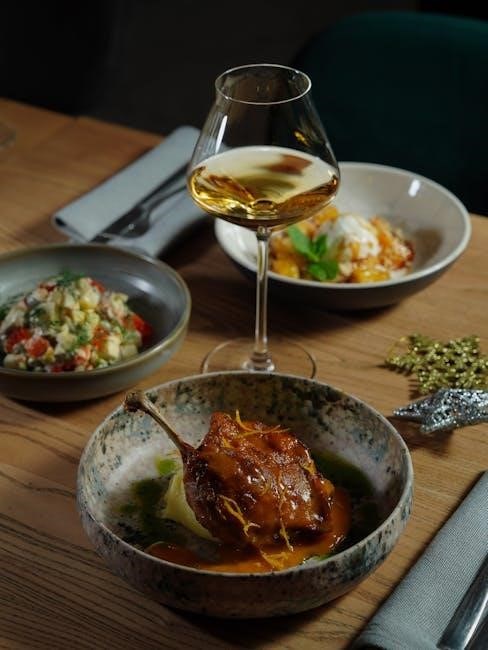
Educational Resources and Worksheets
Educational resources and worksheets on the Last Supper are designed to enhance learning through interactive activities and structured exercises, making complex concepts engaging and accessible for students․
- Includes study guides, puzzles, and reflection exercises․
- Provides hands-on learning opportunities for students․
- Aligns with curriculum goals for religious and cultural education․
Structure of the Last Supper Worksheet
The Last Supper worksheet is structured to guide students through a comprehensive understanding of the event․ It typically begins with an introduction, followed by key events, symbolism, and reflection questions․ The worksheet may include sections for identifying disciples, understanding Jesus’ final teachings, and analyzing the significance of bread and wine․ It often features activities like matching games, fill-in-the-blanks, and short-answer questions to reinforce learning․ The structure is designed to aid comprehension, encourage critical thinking, and help students connect the Last Supper to broader religious and cultural themes․ This format ensures engagement and retention of essential concepts․
Lessons and Activities for Students
Engaging lessons and activities enhance students’ understanding of the Last Supper․ Role-playing the event helps students connect with the disciples’ perspectives․ Group discussions explore the significance of Jesus’ teachings and predictions․ Scriptural analysis activities deepen comprehension of biblical passages․ Reflection exercises encourage students to relate the Last Supper to their personal faith journeys․ Creative projects, such as illustrating the scene or writing a modern-day parable, foster imagination and critical thinking․ These activities cater to diverse learning styles, ensuring meaningful engagement and a lasting grasp of the Last Supper’s importance in religious and historical contexts․
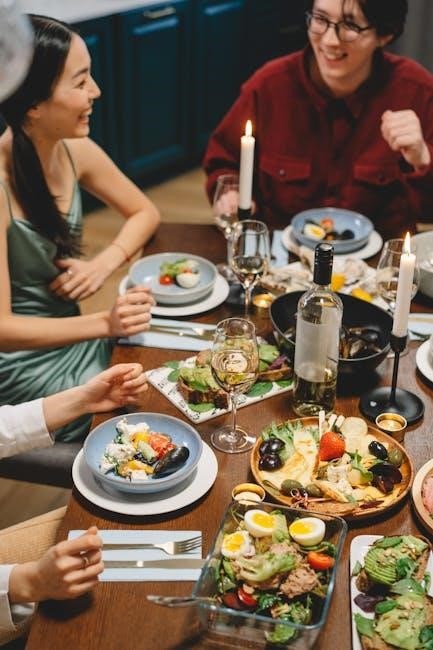
Teaching Strategies for the Last Supper
Effective strategies include storytelling, group discussions, and visual aids to engage students․ Relatable comparisons and hands-on activities enhance understanding, making the Last Supper relevant and memorable for learners․
Engaging Students with Interactive Activities
Interactive activities, such as role-playing the Last Supper, encourage students to participate actively․ Group discussions and debates foster critical thinking about the event’s significance․ Hands-on crafts, like creating communion cup designs, make learning fun and immersive․ Using technology, such as educational apps or virtual tours of da Vinci’s painting, enhances engagement․ These activities help students connect emotionally and intellectually with the story, fostering a deeper understanding of its religious and cultural importance․ By incorporating diverse and dynamic methods, educators can cater to various learning styles, ensuring all students are involved and inspired to explore the topic further․ This approach makes the Last Supper worksheet a valuable educational tool․
Using Visual Aids for Better Understanding
Visual aids, such as images and diagrams, play a crucial role in helping students grasp the significance of the Last Supper․ High-quality pictures of da Vinci’s painting or biblical illustrations can highlight key details, such as the seating arrangement or Jesus breaking bread․ Timelines and infographics can visually explain the sequence of events or the symbolism of the bread and wine․ These tools make complex concepts more accessible, especially for visual learners․ Incorporating these elements into the worksheet ensures students can connect what they see with what they learn, enhancing their overall understanding and engagement with the topic․ Visual aids bridge the gap between text and comprehension effectively․

Worksheet Activities and Exercises
The worksheet includes interactive exercises like matching games, sequencing events, and scriptural connections, fostering engagement and deeper understanding of the Last Supper’s significance for all learners․
Fill-in-the-Blank Exercises
The worksheet features fill-in-the-blank exercises designed to reinforce key terms and concepts related to the Last Supper․ Students are prompted to complete sentences with missing words, such as the names of the twelve apostles, the significance of the bread and wine, or the events leading to Judas’s betrayal․ These exercises are structured to align with biblical accounts and encourage learners to recall specific details․ Visual cues, like images or short phrases, are often provided to assist students․ The activities cater to various learning styles, ensuring engagement and comprehension․ By focusing on essential vocabulary and narratives, fill-in-the-blank exercises help students grasp the story’s theological and historical importance․ They also allow educators to assess understanding effectively․ Additionally, these exercises are adaptable for different age groups, making them a versatile educational tool․
Word Search and Puzzle Activities
The worksheet includes engaging word search and puzzle activities to help students interact with the story of the Last Supper in a fun and creative way․ These exercises feature key terms such as “Passover,” “disciples,” “bread,” “wine,” and “Eucharist,” hidden within a grid of letters․ Students are challenged to locate and circle the words, reinforcing their familiarity with the vocabulary․ Additionally, crossword puzzles and anagram games are included, requiring students to unscramble letters to form meaningful words related to the event․ These activities not only enhance vocabulary retention but also provide an enjoyable learning experience, making the study of the Last Supper memorable and interactive for students of all ages․
Craft and Art Projects

Craft and art projects are integral to making the study of the Last Supper engaging and hands-on for students․ The worksheet includes activities such as drawing scenes from the event, creating mini dioramas, or designing symbolic representations of bread and wine․ Students can also craft paper plates with biblical phrases or paint their interpretation of Leonardo da Vinci’s masterpiece․ These projects encourage creativity while deepening understanding of the Last Supper’s significance․ By visually expressing their knowledge, students develop a personal connection to the story, making it more memorable and enriching their learning experience;
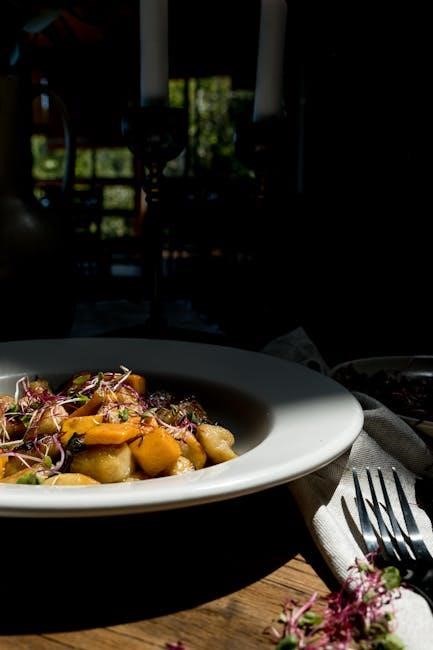
Assessment and Evaluation Tools
Assessment tools include quizzes and tests to evaluate students’ understanding of the Last Supper’s events and symbols, ensuring effective learning․
Multiple-Choice Questions
Multiple-choice questions are an effective way to assess students’ understanding of the Last Supper․ These questions can cover key events, biblical context, and symbolic meanings․ Teachers can design questions to test knowledge of Jesus’ actions, the disciples’ reactions, and the significance of bread and wine․ For example, “What did Jesus mean when he said, ‘This is my body’?” or “Which disciple betrayed Jesus?” Such exercises help reinforce learning and retention․ They also allow students to apply critical thinking skills in selecting the correct answers․ This method is especially useful for evaluating comprehension in a structured and objective manner․ It ensures clarity and precision in assessing student knowledge․
True or False Exercises

True or false exercises are a valuable tool for assessing students’ knowledge of the Last Supper․ These exercises present statements that require students to identify whether they are correct or incorrect․ For example, “Judas Iscariot was present at the Last Supper” (True) or “The Last Supper took place on the day of Jesus’ crucifixion” (False)․ This format helps students engage with factual details and reinforces their understanding of key events․ It also encourages critical thinking and quick recall․ Teachers can create a variety of statements to cover different aspects of the topic, ensuring a comprehensive assessment․ Correct answers can be discussed afterward to clarify any misconceptions․ This method is both educational and engaging for learners of all levels․
Digital Tools for Learning
Digital tools like interactive PDFs and online platforms enhance learning by providing multimedia resources and accessible materials for studying the Last Supper․
Online Worksheets and PDF Resources
Online worksheets and PDF resources offer convenient and interactive ways to study the Last Supper․ These materials often include fill-in-the-blank exercises, Bible verses, and historical context․ Many PDFs are customizable, allowing teachers to tailor content for different age groups or learning levels․ Interactive elements, such as clickable links or multimedia, enhance engagement․ Websites and educational platforms provide downloadable resources, making it easy for students to access learning materials anywhere․ These tools also promote self-paced learning, enabling students to review and reflect on the significance of the Last Supper independently․ PDF resources are particularly useful for visual learners, as they often include images and diagrams․
Interactive Learning Platforms
Interactive learning platforms add a dynamic dimension to studying the Last Supper․ These platforms incorporate multimedia, such as videos, quizzes, and virtual tours, to create an immersive experience․ They often feature interactive timelines, allowing students to explore the events leading up to the Last Supper․ Some platforms include virtual reconstructions of the room where the Last Supper took place, enabling students to visualize the setting․ Interactive quizzes and games test knowledge while keeping students engaged․ These tools are accessible on both desktops and mobile devices, making learning flexible and convenient․ They also cater to different learning styles, ensuring that every student can grasp the material effectively․ These platforms enhance the educational experience by making history come alive․
The Last Supper worksheet PDF offers a comprehensive tool for exploring its religious and cultural significance․ Encouraging deeper study fosters a richer understanding of its enduring impact․
The Last Supper worksheet PDF is an invaluable educational resource, blending biblical significance with interactive learning․ It highlights the event’s importance in Christianity, emphasizing Jesus’ final meal with his disciples․ The worksheet explores cultural depictions, notably Leonardo da Vinci’s iconic painting, and provides activities like fill-in-the-blanks, word searches, and art projects․ Designed for various learning styles, it engages students through visual aids and digital tools, fostering a deeper understanding of the Last Supper’s religious and historical context․ By combining education with creativity, this resource offers a comprehensive approach to studying one of Christianity’s most pivotal moments․
Encouragement for Deeper Study
Exploring the Last Supper worksheet PDF is just the beginning of a meaningful journey into its significance․ Encourage students to delve deeper by reading biblical accounts, analyzing artistic interpretations, and reflecting on the event’s spiritual and cultural impact․ Discussions, debates, and creative projects can foster a richer understanding․ Additionally, exploring related religious texts and historical context can enhance appreciation․ Utilize digital tools for interactive learning and inspire students to explore how the Last Supper influences modern faith and art․ This worksheet serves as a gateway to lifelong learning, sparking curiosity and fostering a deeper connection to its themes and legacy․